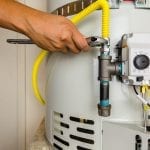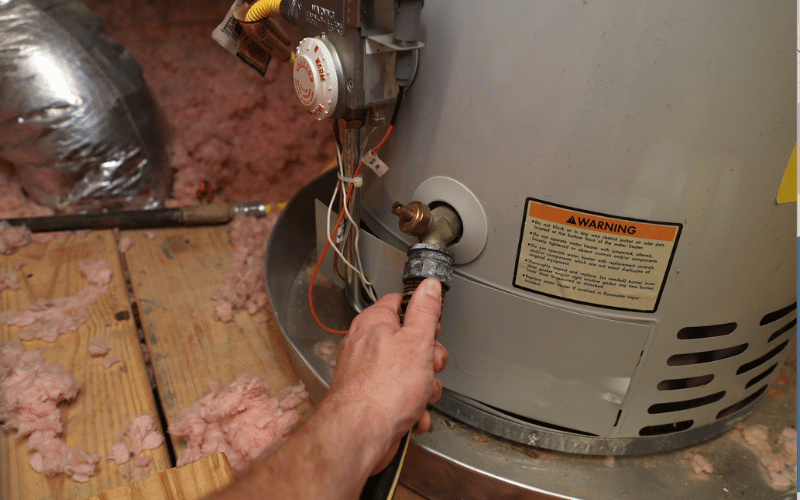Useful Techniques for Caring for Your Home's Hot Water SystemExpert Guidance on Caring for Your Home's Hot Water System
Useful Techniques for Caring for Your Home's Hot Water SystemExpert Guidance on Caring for Your Home's Hot Water System
Blog Article
The article further down involving Tips For Maintaining Your Hot Water Heater is amazingly motivating. Don't skip it.

Hot water is essential for daily convenience, whether it's for a revitalizing shower or cleaning recipes. To ensure your hot water system runs efficiently and lasts longer, regular upkeep is vital. This write-up offers useful suggestions and insights on how to keep your home's warm water system to stay clear of interruptions and expensive repair work.
Introduction
Keeping your home's warm water system may seem daunting, yet with a couple of basic steps, you can ensure it runs smoothly for years ahead. This overview covers whatever from understanding your warm water system to do it yourself maintenance tips and recognizing when to employ expert help.
Relevance of Preserving Your Hot Water System
Normal maintenance not only expands the life expectancy of your hot water system yet likewise ensures it runs efficiently. Disregarding upkeep can result in lowered effectiveness, higher power expenses, and even early failure of the system.
Indicators Your Hot Water System Demands Maintenance
Recognizing when your hot water system requires attention can stop major concerns. Watch out for signs such as irregular water temperature, weird noises from the heating system, or rusty water.
Purging the Hot Water Heater
Purging your water heater gets rid of debris build-up, improving efficiency and prolonging its life.
Checking and Replacing Anode Rods
Anode rods protect against rust inside the tank. Inspecting and changing them when worn out is essential.
Facility Issues Calling For Expert Aid
Instances include major leakages, electrical troubles, or if your water heater is consistently underperforming.
Routine Specialist Maintenance Conveniences
Expert maintenance can consist of comprehensive assessments, tune-ups, and guaranteeing conformity with security criteria.
Checking and Adjusting Temperature Level Settings
Changing the temperature setups ensures optimum efficiency and safety.
Do It Yourself Tips for Maintenance
You can execute several upkeep tasks yourself to maintain your hot water system in leading condition.
Looking for Leaks
Routinely inspect pipelines and links for leakages, as these can result in water damage and greater bills.
Recognizing Your Hot Water System
Before diving right into maintenance jobs, it's handy to comprehend the standard components of your warm water system. Commonly, this includes the hot water heater itself, pipelines, anode rods, and temperature level controls.
Monthly Maintenance Tasks
Routine month-to-month checks can aid capture minor issues before they intensify.
Checking Stress Alleviation Valves
Examining the pressure relief valve ensures it functions properly and stops extreme stress build-up.
Shielding Pipelines
Shielding warm water pipelines minimizes warm loss and can conserve power.
When to Call a Specialist
While do it yourself upkeep is valuable, some problems need expert experience.
Verdict
Normal upkeep of your home's warm water system is necessary for performance, durability, and cost savings. By complying with these ideas and recognizing when to look for specialist help, you can ensure a dependable supply of hot water without unforeseen interruptions.
How to Maintain an Instant Hot Water Heater
Before tinkering with your hot water heater, make sure that it’s not powered on. You also have to turn off the main circuit breaker and shut off the main gas line to prevent accidents. Also turn off the water valves connected to your unit to prevent water from flowing into and out of the appliance. 2. When you’re done, you have to detach the purge valves’ caps. These look like the letter “T” and are situated on either side of the water valves. Doing so will release any pressure that has accumulated inside the valves while at the same time avoid hot water from shooting out and burning your skin. 3. When the purge valves’ caps are removed, you have to connect your hosing lines to the valves. Your unit should have come with three hoses but if it didn’t, you can purchase these things from any hardware or home repair shops. You can also get them from retail stores that sell water heating systems. Read the user’s manual and follow it to complete this task properly. When the hosing lines are connected, open the purge port’s valves. 4. You should never use harsh chemical cleaners or solutions when cleaning your unit. Make use of white vinegar instead. It should be undiluted and you’ll probably use about 2 gallons. 5. Now flush your water heater. This task should probably take about 40 minutes. We can’t give you specific directions for this because the procedure is carried out depending on the type, model and brand of your heater. With that being said, refer to the user’s manual. 6. When you’re done draining the unit, you have to turn off the purge port valves again. Remove the hosing lines that you earlier installed on each of the water valves. Put the valve caps (purge port) back in their respective places and be very careful so as not to damage the rubber discs that are found inside these caps. 7. Now that everything’s back in place, check your user’s manual again to find out how to reactivate your water heating system. 8. Once it is working, turn one of your hot water faucets on just to let air pass through the heater’s water supply pipes. Leave the tap on until water flows smoothly out of it. https://www.orrplumbing.com/blog/2014/september/how-to-maintain-an-instant-hot-water-heater/

I ran across that blog posting on Tips on Maintaining a Water Heater while doing a search on the search engines. Loved our posting? Please quickly share it. Let somebody else find it. Bless you for your time. Please check up our blog back soon.
Get An Estimate Report this page